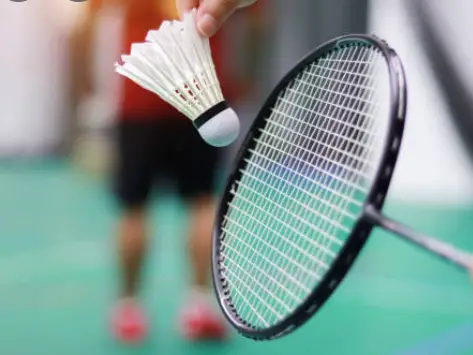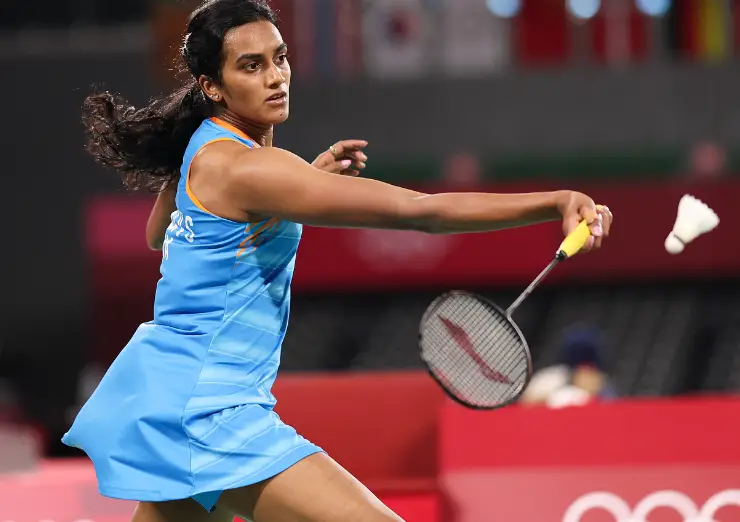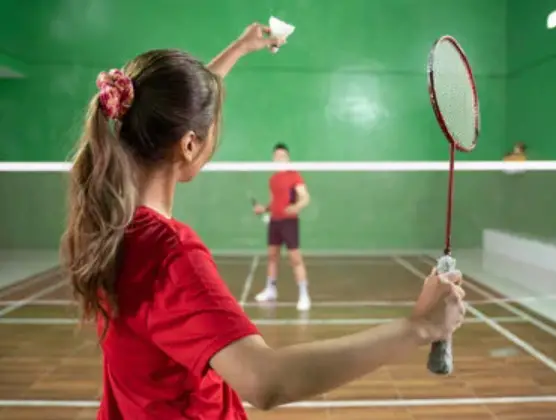What makes badminton exciting for spectators is the fast pace of this racquet sport. Whether it’s a shuttle traveling at over 400 km/h or a tricky drop shot, the error rate is virtually zero. Therefore, understanding and utilizing the court is the difference between victory and defeat.
A badminton court is usually laid on a wooden floor using a synthetic mat as the surface of the court. The court is designed to provide cushion and comfort as the shuttle crisscrosses the playing surface, tricking opponents with smashes and clever shots to score points. Therefore, it is imperative to keep the field surface clean and tidy.
The badminton court has two types of competition, singles, and doubles. The line of judgment is drawn accordingly.
What Is The Size Of A Badminton Court?
According to Badminton World Federation (BWF) guidelines, the standard badminton court length is the same for both types of competition, 13.40 m (44 ft). However, the width is different, singles courts are up to 5.18 m (17 ft) wide and are marked by sidelines, while doubles courts expand to 6.1 m (20 ft) wide and are marked by double sidelines. The full course is diagonal 14.723m.
The court consists of two halves, each 6.7 m (22 ft) long, separated at each end by 1.55 m (5 ft 1 in) high and 1.52 m (5 ft) high badminton nets. I’m here.
The two playing areas on either side of the net are further divided vertically in the middle to mark the serving area. This means that the badminton court has four serving courts that are 3.88 m (12.72 ft) long and 2.53 m (8.3 ft) wide.
As badminton law lays down specific rules for serving in badminton, the court has two services, a short service line 1.98 m (6.5 ft) and a long service line 0.72 m (2.36 ft) from the net. There is a line ) from the baseline that is specially marked for this.
In singles, the server must cross the short service line and be within the boundaries, while in doubles the serve must cross the short service line, but it is the long service line that acts as a landmark in the backcourt. is. This means that the serving length is shorter in doubles than in singles.
What Are The Different Surface Types Of A Badminton Court?
As already mentioned, the sport was born and played as a fun recreational activity on the streets, but over the decades it has become a professional sport and one of the most attended sports. . Badminton is usually played on four different surfaces next to him.
- Synthetic-facing PVC/PU
The most common surface used for the best badminton venues is this synthetic surface, and for several reasons. Usually laid on a wooden platform, these badminton courts are slippery and prevent injury. Less, more bounce, less strain on your knees and ankles, and less risk of injury. In addition, it offers an excellent grip that allows for jumps and quick changes of direction.
- Wooden surface
In addition to plastic coverings, wooden yards are also sometimes seen. They’re known to absorb shock, but unfortunately, they’re more slippery than their synthetic counterparts (less traction and trouble getting a proper grip). Additionally, wood is known to be fragile, making it expensive to maintain.
- Acrylic surface
This type of surface is very similar to a plastic surface made from PVC/PU. Although they look and feel similar, the acrylic finish isn’t as good at absorbing impact as synthetics (it’s tougher). The acrylic side, on the other hand, is stronger and more durable.
- Cement surface
Finally, we should also mention this surface used for playing outdoor recreational badminton. As the name suggests, the surface is concrete, so it doesn’t provide enough support for the foot and poses a much higher risk of injury.
How To Do Maintain The Court
Besides mentioning that proper non-marking shoes are worn to the Badminton venues in order to protect the wooden/synthetic surface, there are also a number of other equally important things as well when it comes to maintaining the polished look of the surface. Here are the ones that are the most valuable:
For synthetic floors
- Daily removal of sticky substances such as chewing gums, tapes, etc. with gentle scraping
- Cleaning the surface with a special microfiber mop specifically designed for such floors and a neutral cleaner at least 2-3 times per day (avoid the usage of acid, caustic, or ammonia-based cleaners)
- Instead of hand-mopping, you can use auto-scrubber but always make sure the battery is fully charged before usage (this will prevent battery acid leaks)
- In order to regain the shine and make it less slippery, you can scrub the floor with white vinegar or silicone thinner maintaining one scrub direction only.
- All of the chairs and additional movable equipment should have wheels and accordingly appropriate support that won’t indent or scratch the floor
For wooden floors (they are more delicate to handle and require more maintenance)
- Every two to three years power sanding should be performed which will bring back the fresh look and the coarseness needed for a good grip.
- Every now and then, the anti-skid coating should be applied in order to enhance the foot grip. Daily regular maintenance cleaning with cleaning solution for flooring
- Replace damaged floorboards
- Apply fresh paint around the net pole
- Repaint the lines to make them easier to see
Conclusion
Badminton is a popular indoor and outdoor sport. Badminton courts vary in size for singles and doubles, with singles courts being narrower (17 feet) than doubles courts (20 feet).
The standard badminton net height for singles and doubles is 1.52 m (5 ft) in the center and 1.55 m (5 ft 2 in) at each end. The net should be placed parallel to the sidelines of the field.
Badminton is a game that can be enjoyed by all ages and skill levels. With proper court size, everyone can enjoy the game of badminton.







